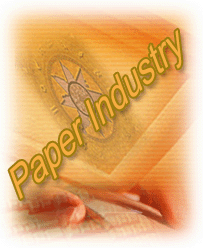 |
| For success set in stone |
|
http://www.paper.com.cn
2011-03-04 |
|
Chinese investors bank on latest papermaking technology
When Chinese inventors introduced papermaking about 1,900 years ago with mulberry and other bast fibers, they would probably have never expected their successors to mass produce paper with stones.
But the Tethia Group, a property firm in Huaibei, Anhui province, recently announced that its workers are doing just that - by becoming "the world's first manufacturer of stone paper".
"Similar technology has existed for about 30 years, but we are the first stone paper manufacturer in the world," says C.B. Hsu, special assistant to chairman from the Taiwan-based Lung Meng Technology Co Ltd, which has a 30 percent investment in Tethia's Huaibei facility to make the product.
Stone paper is produced by blending mineral powder and a small infusion of non-toxic resin. Stone papers are manufactured without the need to fell trees or water pollution. When limestone contributes more than half of the paper's raw materials, it is called stone paper.
Lung Meng owns the patents for making stone paper which contains 56 percent of limestone. They plan to open more stone paper facilities on the mainland starting with the Tethia Group.
Stone paper started becoming popular on the Chinese mainland in March 2010, when a company from Dalian, Liaoning province in Northeast China, provided the tree-free paper for the National People's Congress.
"The paper used was actually produced by our company," Hsu says.
Tethia's 3.6-billion-yuan (397 million euros) facility in Huaibei has eight manufacturing lines and produces more than 5,000 tons of stone paper every month. Tethia aims to improve its annual output up to 1 million tons in five years and expects to recoup its investments within a decade.
"We aim to take about 20 percent of the printing paper market, about 6 million tons on the mainland, with our large-scale production," Hsu says.
Stone paper is also slightly heavier and colder compared with traditional paper. Because it contains inorganic mineral powder and trace amounts of non-toxic resins, it smells much stronger when it burns.
Stone paper does not use woods and water in the manufacturing process and is promoted as low carbon and low polluting. According to Kong Lingfa, chairman of the Tethia Group, the energy consumption for making stone paper is only about half of what traditional paper needs.
"Stone paper production requires fewer materials and creates less pollution than traditional paper industry," says Kong, who started his business in the property market decades ago and began following the paper industry since he bought land from a bankrupt paper mill in Anhui three years ago.
"I see stone paper as the future of the paper industry. I have strong faith in it," Kong says.
With the low cost, the price of paper from the new manufacturing lines is also about 10 percent lower than that of normal paper in the local market. Kong believes the cost will continue to drop when all lines are fully operational.
Local authorities have also expressed their strong interest in the industry.
"The stone paper program is an important attempt in our city's transformation process," Bi Meijia, head of Huaibei, said at the foundation laying ceremony of the Tethia stone paper facility on Feb 18.
Huaibei is famous for its abundant coal resources. By the end of 2008, the coal power industry contributed about 37.4 percent of local GDP.
But the unrestrained exploitation of local coal resources and the impact of the financial crisis also hit the sector badly in the last two years. Huaibei was listed as one of the 44 national resource-exhausted cities by March 2009.
"As a resource-exhausted city, Huaibei needs new programs like Tethia's stone paper facility, which requires less resources but attracts investments and creates up to 2,000 jobs opportunities," says Yang Jun, deputy mayor of Huaibei.
The launching of the stone paper program has also attracted many foreign companies' attention. Noemi Rotger, a consultant for the Spanish embassy, says they are very happy to see that China is starting the large-scale production of stone paper.
"We have similar technologies in some European companies and the industry definitely has a bright future," Rotger says, adding that many European companies want more exchange at the technical level.
About 15 companies from home and abroad have already booked all stone paper set for production by Tethia in 2011.
Still, industry insiders have questioned the technology behind it.
"Stone paper cannot largely replace traditional paper in our daily life, such as napkins and toilet paper, because it cannot be dissolved in water," says Zhang Xiaofei, a management science and engineering researcher from the Dalian University of Technology.
The excavation for stones is also considered damaging for the local environment and recycling tree-free papers is a problem in the industrial chain, Zhang says.
"I believe it still needs at least five years to achieve better technology and become a more mature industry."
Tethia and Lung Meng also admit that there are challenges in the new program.
"There is a huge paper market, but our current production capability seems very small in meeting strong market demand, improving our production capability is a problem we need to overcome," Kong says.
Lung Meng, the patent holder, is working on the retrogradation progress of stone paper. Currently, stone paper can be degraded into small pellets of limestone in six months in the laboratory.
"The recycling of stone paper has to be separated from traditional paper, therefore we also need to build an individual recycling system for stone paper in the future," Hsu says. |
| |
|
|
|


